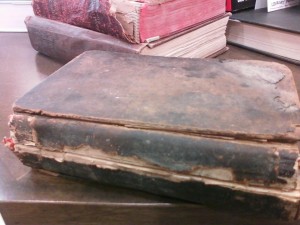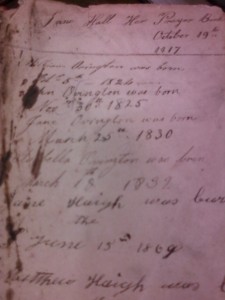Someone confessed to me this morning that they knew well the story of A Christmas Carol, by Charles Dickens – but in fact, had never read it. The admission made me realize that nearly everyone surrounded by Western Culture would have been exposed to the tale since the earliest days of their childhood. Book-lover that I am, even I will admit that it is tougher to commit to reading a book when the outcome is already known, much less a story that can almost be recited from memory without ever having the book in hand.
In fact, A Christmas Carol is hardly a book, it is so short in length. It was one of Mr. Dickens holiday gifts to his readers, those who subscribed to the several newspapers he owned and edited during his lifetime. He published a number of seasonal stories, of which A Christmas Carol is the best known. Generally, the short-in-length Christmas tales are gathered together and published in a single volume.
Books that I have re-read over the years are very select, but I’ve gone back to dip into the Dickens’ well numerous times. It may be because he has so many characters in most of his books that it is easy to be re-introduced to them. Even those that might eventually become forgettable are distinctive as presented by Charles Dickens. I re-read A Christmas Carol last week, and enjoyed it just as much as the first go-through.
Most of the television, stage, and film versions that I’ve seen are faithful to the original. In all likelihood, it must be difficult to wander too far off the Dickens path where the story is concerned. It is told in very concise language, with little of the wandering that he allowed himself in his longer works.
Because of the brevity of the writing, each word carries a lot of power and significance. When I reached the part describing Mr. Scrooge’s discovery that he had completed his ghostly travels in a single night, I allowed myself to backtrack and re-read the passage, thoroughly enjoying the description of the old miser throwing open the windows on his first new glimpse of Christmas morning:
“Running to the window, he opened it, and put out his head. No fog, no mist; clear, bright jovial, stirring, cold; cold, piping for the blood to dance to; Golden sunlight; Heavenly sky; sweet fresh air; merry bells. Oh, glorious! Glorious!”
Reading the lines, I could almost feel the crisp, chill air on my own face.
Charles Dickens wrote the tale 169 years ago this Christmas, and it has been credited by some as changing the holiday itself from one of somberness and sobriety as it was observed in his day, to one of festivities and merriment with family and acquaintances as it is still proposed, for the most part.
It may be more difficult than ever to keep the sentiment of the Cratchit family in the face of the seemingly relentless and increasing-in-number Ebenezer Scrooges of our day.
And this is where all the modern-time scribes revert to Dickens to close out the article, essay, or blog, during the Christmas season:
“And so, as Tiny Tim observed, God bless Us, Every One!”

